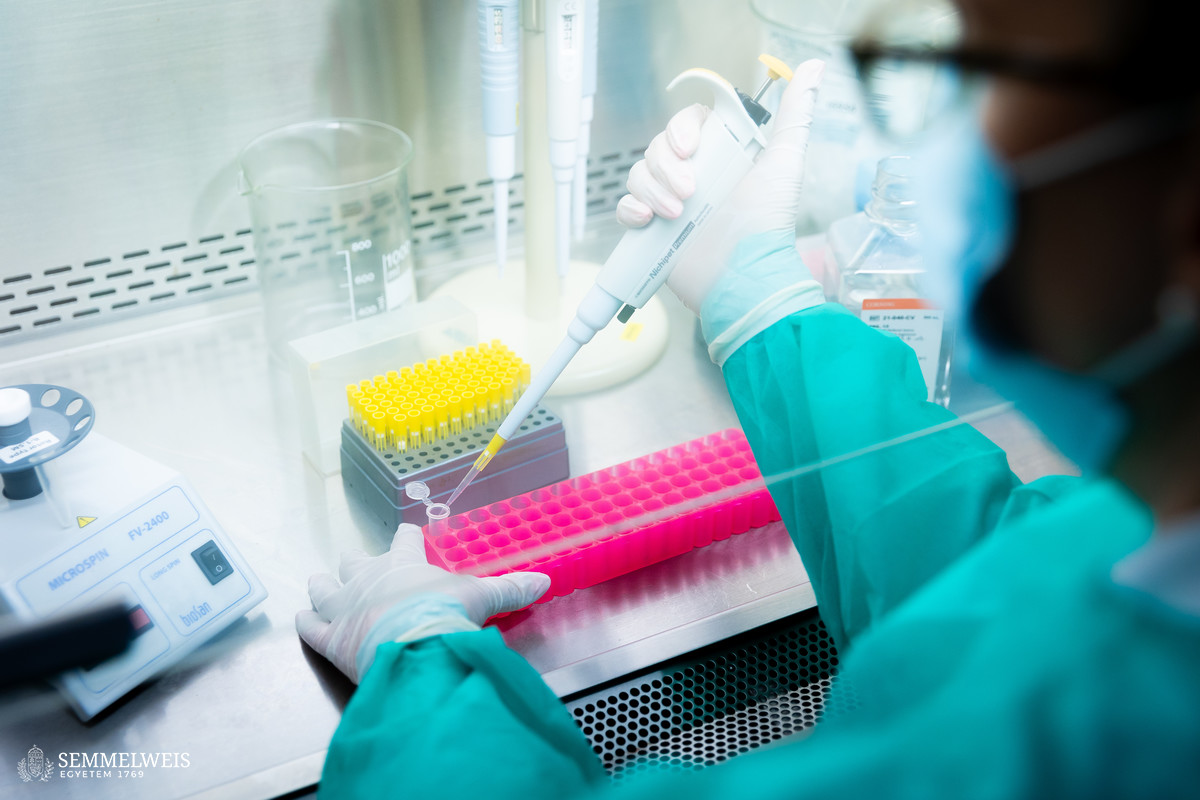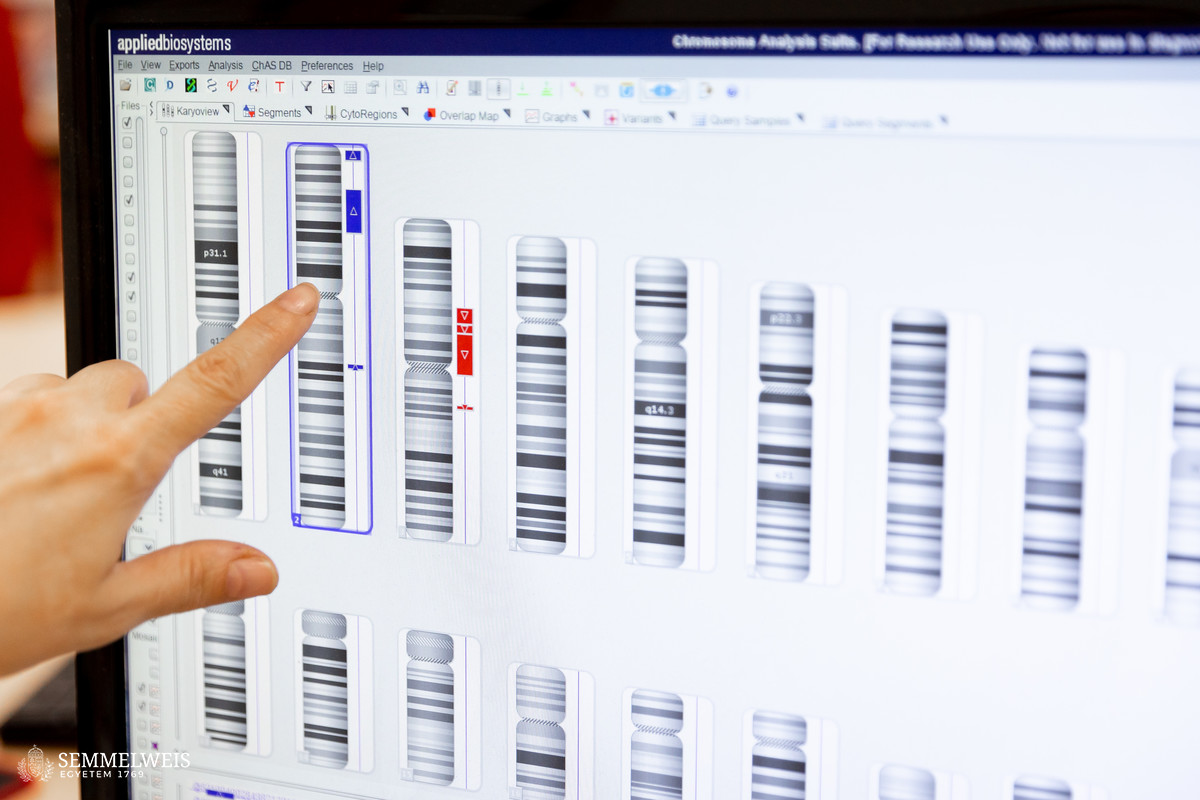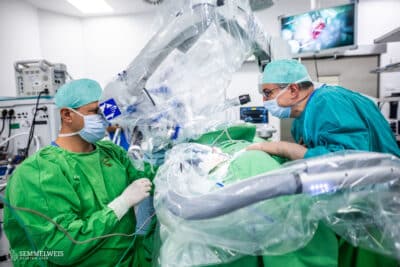Semmelweis University’s Prenatal and Preimplantation Genetics Working Group, established in April 2024, is made up of members of three organizational units: the Molecular Diagnostics Laboratory of the Department of Internal Medicine and Oncology, the Department of Obstetrics and Gynecology, and the Assisted Reproduction Center.
In Hungary, approximately 150 infertile couples per year require preimplantation (i.e. prior to embryo transfer) genetic testing for diagnostic purposes in connection with assisted reproductive treatment such as in vitro fertilization (IVF). This form of diagnostics enables the early detection, even before embryo transfer, of serious diseases associated with genetic abnormalities that significantly threaten quality of life, according to Dr. Artúr Beke, Associate Professor at the Department of Obstetrics and Gynecology, clinical geneticist, and specialist in molecular diagnostics.
 “During the tests, in the case of parent couples who are carriers of a genetic disease, we remove 5-10 cells (at the 70-100-cell stage) from the 5-day-old embryos fertilized in the IVF program and then analyze them using advanced molecular genetic methods,” explained Professor Dr. Péter Lakatos, Laboratory Manager and Deputy Director of the Department of Internal Medicine and Oncology. “Our goal is to implant only those embryos that do not carry the genetic disorder detected in the parents,” he added.
“During the tests, in the case of parent couples who are carriers of a genetic disease, we remove 5-10 cells (at the 70-100-cell stage) from the 5-day-old embryos fertilized in the IVF program and then analyze them using advanced molecular genetic methods,” explained Professor Dr. Péter Lakatos, Laboratory Manager and Deputy Director of the Department of Internal Medicine and Oncology. “Our goal is to implant only those embryos that do not carry the genetic disorder detected in the parents,” he added.
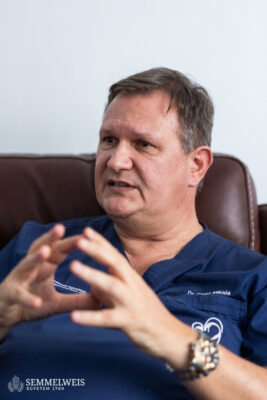 Describing the process in more detail, Dr. Miklós Sipos, Associate Professor and Director of the Assisted Reproduction Center, said that preimplantation genetic diagnosis (PGD) was always preceded by genetic counseling at the Genetics Center of the Department of Obstetrics and Gynecology, where family history and existing genetic laboratory findings were reviewed. “The couples who come here have known genetic diseases or may have had multiple unsuccessful assisted reproductive treatments or miscarriages. It is important to note that PGD testing can only be performed in the case of certain genetic abnormalities as defined and identified by law, so it may be necessary to have these tests performed on the parents before PGD,” added Dr. Artúr Beke. Following genetic counseling, if the couple decides to undergo the procedure, the clinical geneticist requests a professional opinion from the Clinical Genetics Section of Medical Boards, and after their positive decision, IVF treatment supplemented with genetic testing can be initiated.
Describing the process in more detail, Dr. Miklós Sipos, Associate Professor and Director of the Assisted Reproduction Center, said that preimplantation genetic diagnosis (PGD) was always preceded by genetic counseling at the Genetics Center of the Department of Obstetrics and Gynecology, where family history and existing genetic laboratory findings were reviewed. “The couples who come here have known genetic diseases or may have had multiple unsuccessful assisted reproductive treatments or miscarriages. It is important to note that PGD testing can only be performed in the case of certain genetic abnormalities as defined and identified by law, so it may be necessary to have these tests performed on the parents before PGD,” added Dr. Artúr Beke. Following genetic counseling, if the couple decides to undergo the procedure, the clinical geneticist requests a professional opinion from the Clinical Genetics Section of Medical Boards, and after their positive decision, IVF treatment supplemented with genetic testing can be initiated.
“After that, ovarian stimulation, egg retrieval, and fertilization are performed at ARC,” continued Dr. Miklós Sipos. On average, 5-10 cells need to be removed from the fertilized pre-embryos on day 5 using a laser beam, which does not cause any damage to the embryo. After sampling, the embryos are stored frozen. In the Molecular Biology Laboratory, the cells are DNA tested to determine which pre-embryos are affected by a particular genetic disease. Only those deemed healthy by the biologists during genetic testing are implanted.
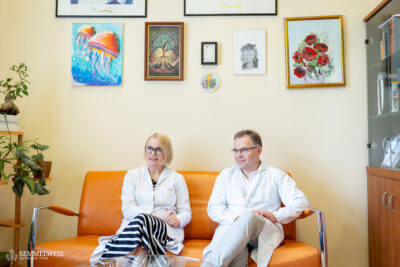 There are three types of preimplantation genetic tests, explained biologist Dr. János Kósa, Senior Research Fellow at the Molecular Biology Laboratory. Monogenic diseases (e.g. Duchenne muscular dystrophy or Marfan syndrome) can be detected using a test called PGT-M. This is recommended for couples who are at high risk of transmitting a disorder caused by a single gene. PGT-SR testing is recommended for couples where one partner has a chromosome rearrangement, which means there is a risk of embryos being created with an incorrect chromosome number or structure. The third type is genetic testing for aneuploidy, i.e. an abnormal number of chromosomes, called PGT-A (this testing method is not currently permitted in Hungary). It provides information about the number of chromosomes in the embryo, revealing any deviations from the normal 46 chromosomes. This test is used, for example, in cases of advanced age, repeated implantation failure, multiple miscarriages, or severe male infertility. The array CGH/CMA method, which detects numerical abnormalities in chromosomes and deficiencies/excesses of various extent (monosomy/trisomy, microdeletion/microduplication), can also show mosaicism greater than 20 percent, added biologist Dr. Henriett Pikó.
There are three types of preimplantation genetic tests, explained biologist Dr. János Kósa, Senior Research Fellow at the Molecular Biology Laboratory. Monogenic diseases (e.g. Duchenne muscular dystrophy or Marfan syndrome) can be detected using a test called PGT-M. This is recommended for couples who are at high risk of transmitting a disorder caused by a single gene. PGT-SR testing is recommended for couples where one partner has a chromosome rearrangement, which means there is a risk of embryos being created with an incorrect chromosome number or structure. The third type is genetic testing for aneuploidy, i.e. an abnormal number of chromosomes, called PGT-A (this testing method is not currently permitted in Hungary). It provides information about the number of chromosomes in the embryo, revealing any deviations from the normal 46 chromosomes. This test is used, for example, in cases of advanced age, repeated implantation failure, multiple miscarriages, or severe male infertility. The array CGH/CMA method, which detects numerical abnormalities in chromosomes and deficiencies/excesses of various extent (monosomy/trisomy, microdeletion/microduplication), can also show mosaicism greater than 20 percent, added biologist Dr. Henriett Pikó.
PGD has a high reliability rate of approximately 97-98 percent in identifying a given genetic disorder, but in the case of every successful pregnancy conceived through assisted reproduction relying on PGD, appropriate prenatal screening must also be performed at 12 weeks of pregnancy, experts emphasize. The tests are not currently covered by social security in Hungary. Dr. Péter Lakatos noted that there was currently no other way to detect these serious diseases in time, and since they were hereditary, the diagnosis might even benefit future generations.
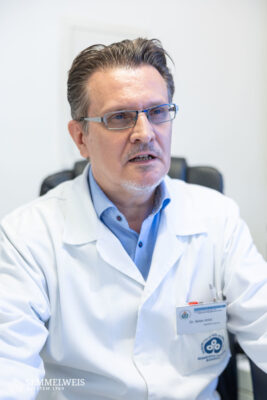 According to Dr. Artúr Beke, it is also important that couples who have refrained from starting a family due to a known genetic disorder or multiple (so-called recurrent) miscarriages may now be given a chance to have a healthy child. Semmelweis University’s Prenatal and Preimplantation Genetics Working Group also performs all other related genetic tests. They primarily deal with samples from the university, but they also receive numerous external orders. The working group – made up of members of the Department of Obstetrics and Gynecology, led by Dr. Nándor Ács, and of the Department of Internal Medicine and Oncology, led by Dr. István Takács – has successfully performed about a dozen PGD procedures to date.
According to Dr. Artúr Beke, it is also important that couples who have refrained from starting a family due to a known genetic disorder or multiple (so-called recurrent) miscarriages may now be given a chance to have a healthy child. Semmelweis University’s Prenatal and Preimplantation Genetics Working Group also performs all other related genetic tests. They primarily deal with samples from the university, but they also receive numerous external orders. The working group – made up of members of the Department of Obstetrics and Gynecology, led by Dr. Nándor Ács, and of the Department of Internal Medicine and Oncology, led by Dr. István Takács – has successfully performed about a dozen PGD procedures to date.
Eszter Keresztes
Translation: Dr. Balázs Csizmadia
Photos by Bálint Barta, Boglárka Zellei – Semmelweis University
